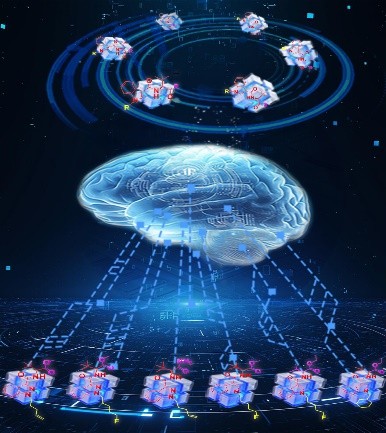Deep Learning Aids Raman Spectroscopy to Accurately Distinguish Synthetic Cannabinoids
Editor: | Jul 07,2025
As a new psychoactive substance, synthetic cannabinoids have been abused due to their diverse structures, fast iteration speed, and stronger excitatory ability than traditional drugs, which seriously threatens life and health and social stability, and poses great challenges to on-site testing. Therefore, the precise identification and differentiation of synthetic cannabinoids are both urgently needed and of significant importance. Due to the low chemical reactivity and minor structural variations of synthetic cannabinoid substances, distinguishing them through covalent reactions is challenging. In light of this, the Xinjiang Key Laboratory of Trace Chemical Substances Sensing at the Xinjiang Technical Institute of Physics and Chemistry, has proposed a method combining Raman spectroscopy with deep learning algorithms to accurately differentiate and identify CA series synthetic cannabinoids (with amide groups as the head groups), which exhibit highly similar structures.
Raman spectroscopy, widely employed in the field of trace substance detection due to its ability to provide molecular fingerprinting, faces a challenge with structurally highly similar substances, whose Raman spectra are also highly similar and difficult to distinguish by the naked eye. The research team has proposed a CNN algorithm based on an attention mechanism module integration, effectively and accurately distinguishing CA series synthetic cannabinoids. Specifically, by using three CNN algorithms (VGG16, DenseNet121, ResNet34) to preliminarily process the obtained Raman spectral data, the accuracy of which needs to be improved. Through the introduction of the Attention Mechanism Module (SENet), the classification accuracy of the ResNet34 model was improved to 100%, and the accurate discrimination of six synthetic cannabinoids was realized. Furthermore, the attribution algorithm is used to find out the most discriminating Raman spectral characteristic bands of the SE_ResNet34 model in the classification process, and the system analyzes how the algorithm model distinguishes multiple objects based on subtle spectral differences, which provides a reference for in-depth understanding of the internal logic of the algorithm model for accurate classification. Additionally, the generalization capability of the SE_ResNet34 model has been effectively validated, demonstrating that the classification accuracy remains unaffected by differences in target substance concentration, structural analogs, and other common drugs, with a consistent classification accuracy rate of 100%.
This work offers a research paradigm for the application of advanced deep learning-assisted Raman spectroscopy analysis in distinguishing and identifying substances, enhancing the understanding of Raman spectral information at the sub-molecular level, and effectively promoting interdisciplinary research.
This work was published in Analytical Chemistry entitled as “Deep Learning Assisted Raman Spectral Analysis for Accurate Differentiation of Highly Structural-similar CA Series Synthetic Cannabinoids”, Dr. Du Yuwan, Xinjiang Technical Institute of Physics and Chemistry, and Li Wenlong, a joint master's student of Xinjiang University, are the co-first authors. Prof. Xincun Dou and Prof. Yuan Liu from Xinjiang Technical Institute of Physics and Chemistry are the co-corresponding authors. This work was supported by the National Natural Science Foundation of China, the Tianshan Innovation Team, the Special Fund for Local Science, Technology Development of the Central Government and Tianchi Talents.

Figure: Raman Spectroscopy Coupled with Deep Learning Algorithms for the Precise Differentiation and Identification of Structurally Similar Synthetic Cannabinoids (Image by the XTIPC)
附件下载:
 (86) 991-3838931
(86) 991-3838931 lhskj@ms.xjb.ac.cn
lhskj@ms.xjb.ac.cn (86)991-3838957
(86)991-3838957 40-1 Beijing Road
Urumqi, XinjiangChina
40-1 Beijing Road
Urumqi, XinjiangChina